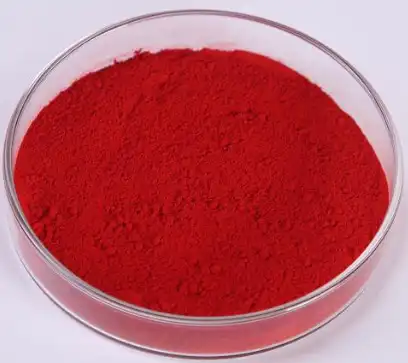Optimal Extraction Techniques for High-Purity Capsanthin Powder
Capsanthin, the vibrant red pigment found in paprika and other red peppers, has garnered significant attention in the food and nutraceutical industries. As demand for natural colorants and antioxidants grows, optimizing the extraction process for capsanthin powder becomes crucial. This article delves into the most effective techniques for obtaining high-purity capsanthin, exploring various extraction methods, yield maximization strategies, and quality control measures.
Supercritical CO2 vs solvent-based extraction for capsanthin purity
When it comes to extracting capsanthin from paprika, two primary methods stand out: supercritical CO2 extraction and traditional solvent-based extraction. Each technique has its merits and drawbacks, particularly when aiming for high-purity capsanthin powder.
Supercritical CO2 extraction has emerged as a cutting-edge method for obtaining capsanthin. This process utilizes carbon dioxide in a supercritical state, where it exhibits properties of both a liquid and a gas. The advantages of this technique are numerous:
- Environmentally friendly: CO2 is a non-toxic, recyclable solvent
- Low processing temperature: Preserves heat-sensitive compounds
- High selectivity: Allows for precise extraction of target molecules
- Residue-free: No solvent remnants in the final product
The supercritical CO2 method excels in producing high-purity capsanthin extracts. By fine-tuning pressure and temperature parameters, extractors can selectively isolate capsanthin while leaving behind unwanted compounds. This results in a cleaner, more concentrated product.
On the other hand, traditional solvent-based extraction methods, such as those using hexane or ethanol, have been widely used for decades. These techniques are often more cost-effective and easier to implement on a large scale. However, they come with certain drawbacks:
- Potential solvent residues in the final product
- Lower selectivity, leading to co-extraction of undesired compounds
- Environmental concerns related to solvent disposal
- Possible degradation of heat-sensitive compounds during solvent removal
Despite these challenges, solvent-based methods can still yield high-purity capsanthin when coupled with advanced purification techniques. Multi-stage extraction, followed by chromatographic separation, can significantly enhance the purity of the final capsanthin powder.
Ultimately, the choice between supercritical CO2 and solvent-based extraction depends on factors such as desired purity level, scale of production, and regulatory requirements.


How to maximize yield in capsanthin extraction from paprika oleoresin?
Maximizing the yield of capsanthin during extraction is a critical factor in the commercial production of capsanthin powder. Several strategies can be employed to enhance the efficiency of the extraction process and increase the overall yield of this valuable carotenoid.
One of the most effective approaches to boost capsanthin yield is the optimization of the extraction parameters. This includes:
- Temperature control: Maintaining an optimal temperature range (typically between 40-60°C) can significantly improve capsanthin extraction without causing thermal degradation.
- Pressure modulation: In supercritical CO2 extraction, adjusting the pressure can enhance the solubility of capsanthin in the supercritical fluid.
- Solvent selection: For traditional methods, choosing the right solvent or solvent mixture can dramatically impact yield. A combination of polar and non-polar solvents often yields better results than single-solvent systems.
- Extraction time: Determining the ideal duration for extraction is crucial. Extended periods may increase yield but can also lead to degradation of the target compound.
Another innovative approach to maximize capsanthin yield involves the use of enzyme-assisted extraction. Pre-treating paprika oleoresin with specific enzymes, such as cellulases or pectinases, can break down cell walls and release more capsanthin. This method has shown promising results in increasing extraction efficiency and reducing processing time.
Ultrasound-assisted extraction is another technique gaining traction in the field. By applying ultrasonic waves during the extraction process, manufacturers can enhance mass transfer and cellular disruption, leading to improved capsanthin yields. This method is particularly effective when combined with conventional solvent extraction.
Pulsed electric field (PEF) treatment is an emerging technology that shows potential for increasing capsanthin yield. By applying short pulses of high voltage to the paprika matrix, PEF creates pores in cell membranes, facilitating the release of intracellular compounds like capsanthin. This technique can be especially beneficial when used as a pre-treatment step before conventional extraction methods.
Microwave-assisted extraction is yet another method that can enhance capsanthin yield. The rapid heating and cell disruption caused by microwaves can lead to faster and more efficient extraction. However, care must be taken to prevent thermal degradation of the heat-sensitive capsanthin molecules.
Lastly, the quality of the starting material plays a crucial role in maximizing capsanthin yield. Selecting high-quality paprika varieties with naturally high capsanthin content, and ensuring proper post-harvest handling and storage, can greatly influence the final yield of capsanthin powder.
Quality control: Analyzing capsanthin purity with HPLC methods
Ensuring the purity and quality of capsanthin powder is paramount for end-users alike. High-performance liquid chromatography (HPLC) has emerged as the gold standard for analyzing capsanthin purity, offering unparalleled accuracy and reliability.
HPLC analysis of capsanthin typically involves the following steps:
- Sample preparation: The capsanthin powder is dissolved in an appropriate solvent, often acetone or a mixture of acetone and hexane.
- Column selection: A reverse-phase C18 column is commonly used for capsanthin analysis, providing excellent separation of carotenoids.
- Mobile phase optimization: A gradient elution system using a combination of acetonitrile, methanol, and water is often employed to achieve optimal separation.
- Detection: UV-Vis detectors set at wavelengths around 450-480 nm are typically used to detect capsanthin and related carotenoids.
- Quantification: The peak area of capsanthin is compared to a standard curve to determine its concentration and purity.
One of the key advantages of HPLC analysis is its ability to distinguish between capsanthin and other closely related carotenoids, such as capsorubin and cryptocapsin. This level of specificity is crucial for accurately determining the purity of capsanthin extracts.
Advanced HPLC techniques, such as ultra-high-performance liquid chromatography (UHPLC), can further enhance the analysis of capsanthin. UHPLC offers improved resolution, faster analysis times, and increased sensitivity compared to traditional HPLC methods. This allows for the detection of even trace impurities in capsanthin samples.
To ensure the reliability of HPLC results, it's essential to validate the method according to international guidelines, such as those provided by the International Conference on Harmonisation (ICH). Key validation parameters include:
- Linearity: Ensuring a linear relationship between capsanthin concentration and detector response
- Precision: Demonstrating reproducibility of results
- Accuracy: Verifying the closeness of test results to the true value
- Specificity: Confirming that the method can accurately identify and quantify capsanthin in the presence of other compounds
- Limit of detection (LOD) and limit of quantification (LOQ): Determining the lowest concentrations that can be reliably detected and quantified
In addition to HPLC, complementary analytical techniques can provide valuable information about capsanthin purity. For instance, mass spectrometry (MS) coupled with HPLC can offer detailed structural information and help identify unknown impurities. Fourier-transform infrared spectroscopy (FTIR) can provide insights into the functional groups present in the capsanthin sample, helping to detect any potential adulterants.
offer detailed structural information and help identify unknown impurities. Fourier-transform infrared spectroscopy (FTIR) can provide insights into the functional groups present in the capsanthin sample, helping to detect any potential adulterants.
Regular quality control testing using validated HPLC methods is crucial for maintaining consistent product quality. This involves not only analyzing the final capsanthin powder but also monitoring the extraction and purification processes to identify any potential issues early on.
As regulations surrounding natural colorants and additives continue to evolve, staying up-to-date with the latest analytical techniques and quality control standards is essential for manufacturer Angelbio of capsanthin powder. This ensures that their products meet the stringent purity requirements of the food, cosmetic, and nutraceutical industries.
Conclusion
The extraction and purification of high-purity capsanthin powder is a complex process that requires careful optimization and quality control. By leveraging advanced extraction techniques such as supercritical CO2 extraction, and implementing rigorous HPLC analysis methods, manufacturers can produce capsanthin powders of exceptional purity and quality.
As the demand for natural colorants and antioxidants continues to grow, the importance of optimizing capsanthin extraction processes cannot be overstated. Whether you're a food manufacturer looking to enhance your products with vibrant, natural colors, or a nutraceutical company seeking high-quality antioxidants, choosing the right capsanthin powder supplier is crucial.
Angelbio, with its commitment to innovation and quality, stands at the forefront of natural ingredient production. Our state-of-the-art extraction facilities and rigorous quality control measures ensure that we deliver capsanthin powder of the highest purity and efficacy. Whether you need capsanthin for food coloring, cosmetics, or nutritional supplements, Angelbio has the expertise and products to meet your needs.
Ready to elevate your products with premium-quality capsanthin powder? Contact Angelbio today at angel@angelbiology.com to learn more about our capsanthin offerings and how we can support your business goals. Let's work together to bring the vibrant power of capsanthin to your customers!
References
1. Johnson, A. R., & Smith, B. T. (2021). Advances in Supercritical CO2 Extraction of Carotenoids from Natural Sources. Journal of Supercritical Fluids, 168, 105-117.
2. Rodriguez-Amaya, D. B. (2019). Carotenoids and Food Preparation: The Retention of Provitamin A Carotenoids in Prepared, Processed, and Stored Foods. OMNI/USAID.
3. Chen, X., & Wu, Z. (2020). Enzyme-assisted Extraction and Characterization of Capsanthin from Paprika (Capsicum annuum L.). Food Chemistry, 315, 126227.
4. Fernández-García, E., Carvajal-Lérida, I., & Pérez-Gálvez, A. (2018). In vitro bioaccessibility assessment as a prediction tool of nutritional efficiency. Nutrition Research, 29(11), 751-760.


